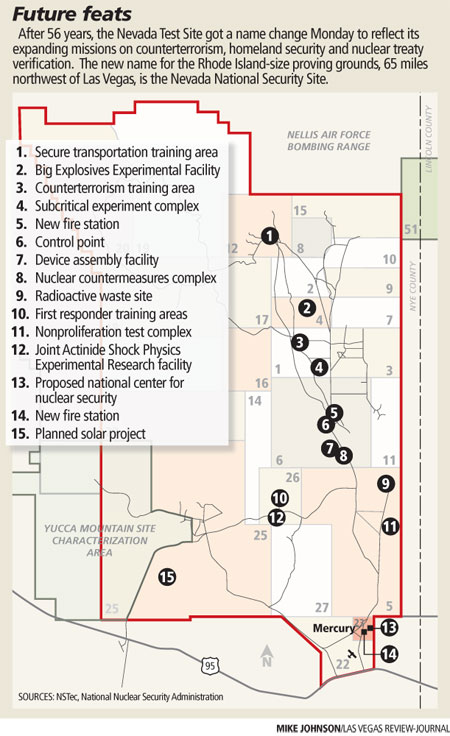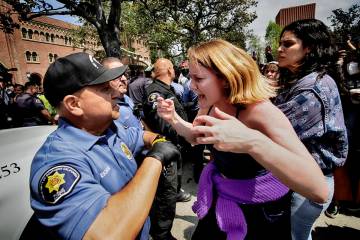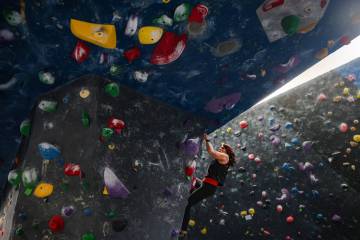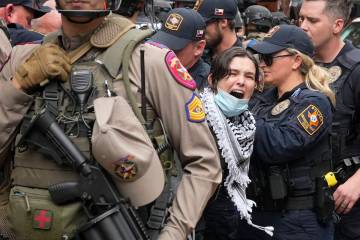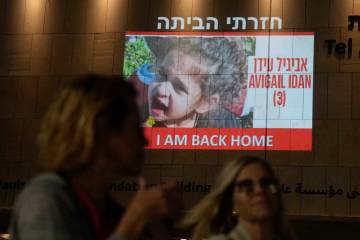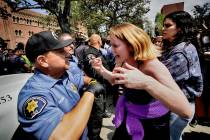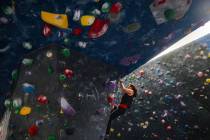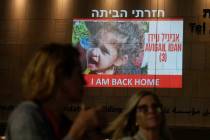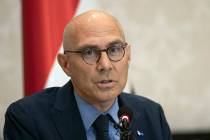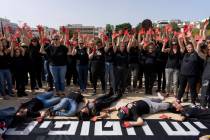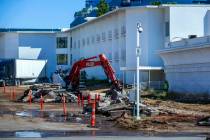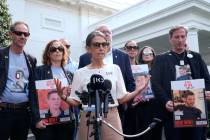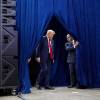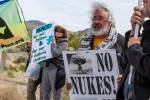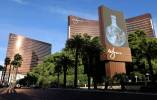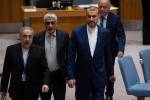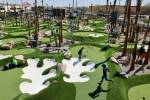It’s official: Test site gets new name
Known for six decades as the Nevada Test Site, the Rhode Island-size tract of high desert where government scientists detonated nuclear bombs during the Cold War got a new name Monday: the Nevada National Security Site.
The scientists who work there will probably call it "N-squared, S-squared," or N2S2, short for NNSS, said Troy Wade, chairman of the Nevada Test Site Historical Foundation.
The name change was brought about by legislation from Sen. Harry Reid, D-Nev., and the state's congressional delegation. The branch of the Department of Energy that runs the site -- the National Nuclear Security Administration -- selected a name to reflect the site's expanded missions on counterterrorism, homeland security and treaty verification.
"I'll always think about it as the Nevada Test Site," Wade said. "But I think the point the senator (Reid) made and (NNSA Administrator Thomas) D'Agostino made is the world has changed and the needs have changed. And name recognition is an awful lot of the world we live in."
Wade worked at the test site during the heyday of nuclear weapons testing. He saw it go from above-ground detonations that sent mushroom clouds into the sky to below-ground explosions in tunnels and deep shafts that sent shock waves toward high-rise buildings on the Strip.
Reid said the site was "once a critical battlefield in the Cold War."
"We are no longer facing the Soviet Union," he said during a ceremony at the NNSA's North Las Vegas office. "As we establish a new name and a new mission, we're inaugurating a new way to keep Nevada and our nation safe."
Reid said the new objectives of the mission are to prevent terrorists from smuggling nuclear materials into the country and "to keep nuclear weapons out of the hands of those who want to do us harm."
"We'll use our skills, talent and resources to be a key piece of the nonproliferation puzzle," he said, adding that the site also will serve "efforts to respond rapidly to national emergencies."
D'Agostino said Monday was "an important day for Nevada" and the nation. For 60 years, the site played an important role in keeping the nation "safe and secure," he said.
"Really, what we want to do is reflect the fact that the nature of our national security threat has changed dramatically since the Cold War, and it will continue to evolve," D'Agostino said. "As it evolves, we have to make sure that we adapt and are ready to address those different changes."
The site will continue to be used to train first responders. Scientists at the site also will continue developing sensors and detectors that can identify nuclear materials that terrorists might try to smuggle through seaports, airports and border crossings.
The site will continue to be used by the Defense Threat Reduction Agency, and treaty experts from the U.S. Department of State will converge on the site to chart work needed to verify future treaties.
A secure building at the site, the Device Assembly Facility, will be used to train International Atomic Energy Agency inspectors to detect nuclear material production.
Over the years, employment and funding at the site have gone from a peak of 12,000 employees and a $1 billion budget in the late 1980s to 2,300 workers and a $500 million budget this year.
On Dec. 18, 1950, President Harry Truman signed the top secret memorandum that made a 680-square-mile swath of Nevada the nation's continental site for testing nuclear weapons.
The first nuclear test at the site, originally called the Nevada Proving Grounds, was on Jan. 27, 1951. A 1,000-pound bomb was dropped from a B-50 airplane flying more than three miles above ground.
The proving ground was dubbed the Nevada Test Site on Dec. 31, 1954. Four years later, it was doubled in size to 1,350 square miles. A realignment of the site's boundary with the Department of Defense land that borders it on three sides expanded it to 1,360 square miles.
From 1951 through 1992, the test site's role focused on full-scale tests of nuclear weapons. During that time, 100 tests were conducted in the atmosphere until the Limited Test Ban Treaty took effect in 1963. That was followed by 828 below-ground tests that shook the desert. The last test, dubbed Divider, was on Sept. 23, 1992.
A moratorium that has been extended indefinitely is now in place.
The stockpile stewardship mission at the site now focuses on how plutonium ages in the decades after weapons were produced.
A key tool in that task is the underground subcritical experiments complex, known as U1a. In the array of chambers that extend off a deep shaft, tiny amounts of plutonium are detonated but don't erupt into nuclear chain reactions.
Contact reporter Keith Rogers at krogers@ reviewjournal.com or 702-383-0308.
More about the Nevada National Security Site



